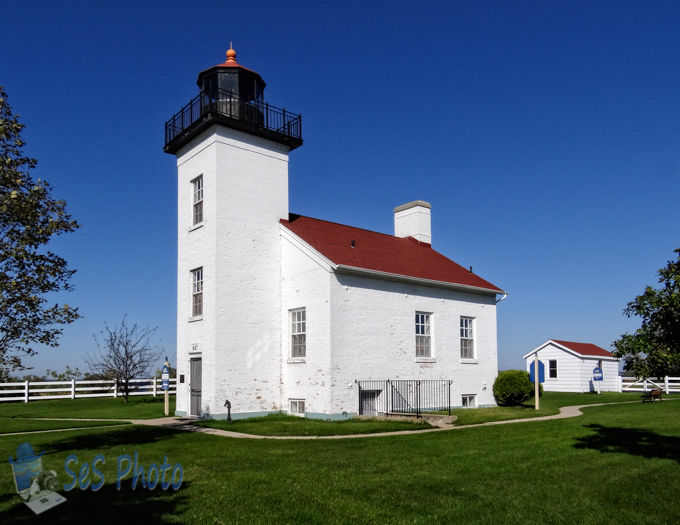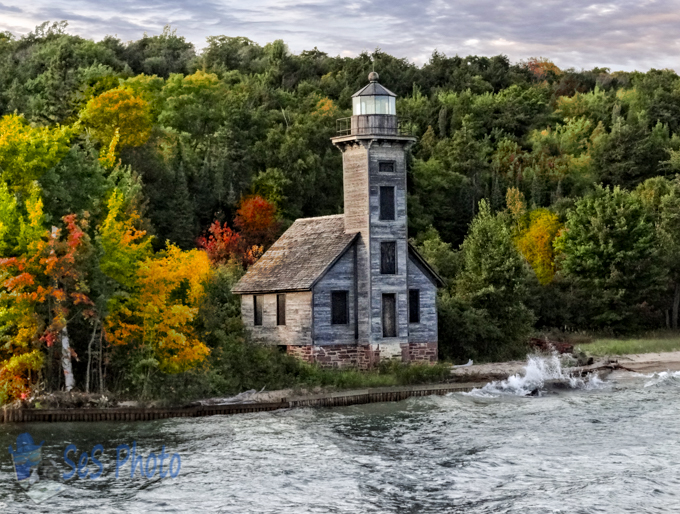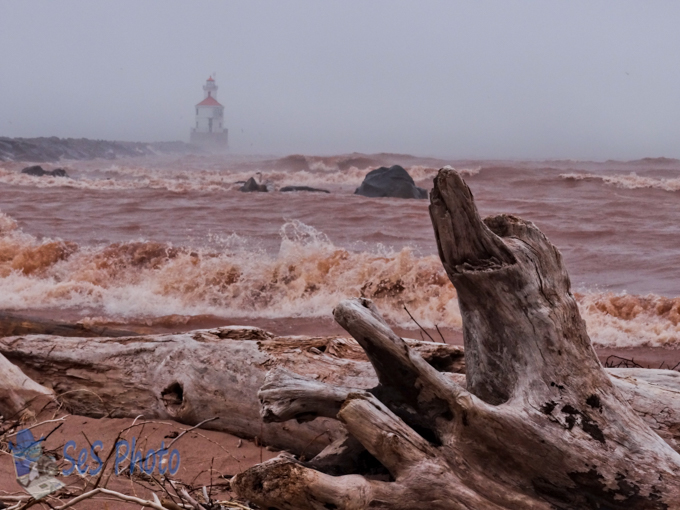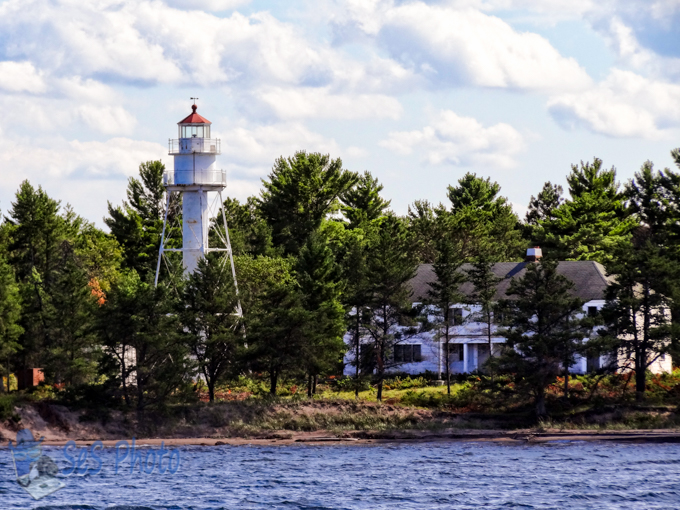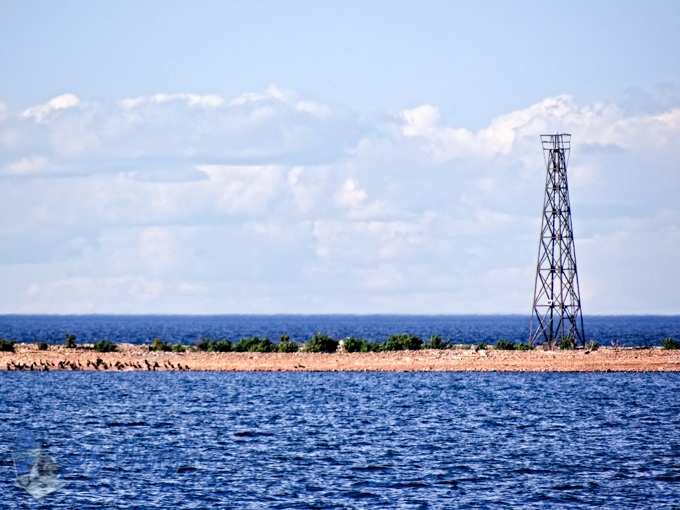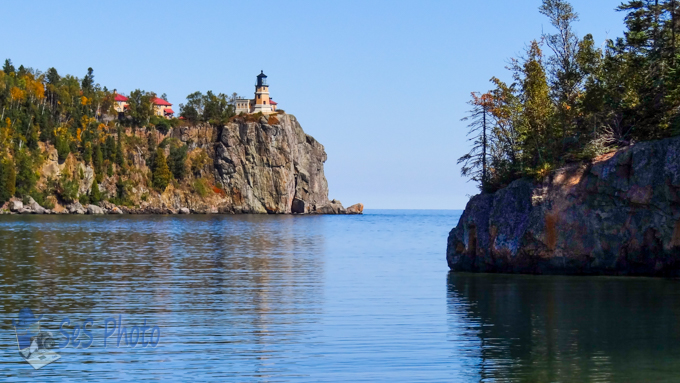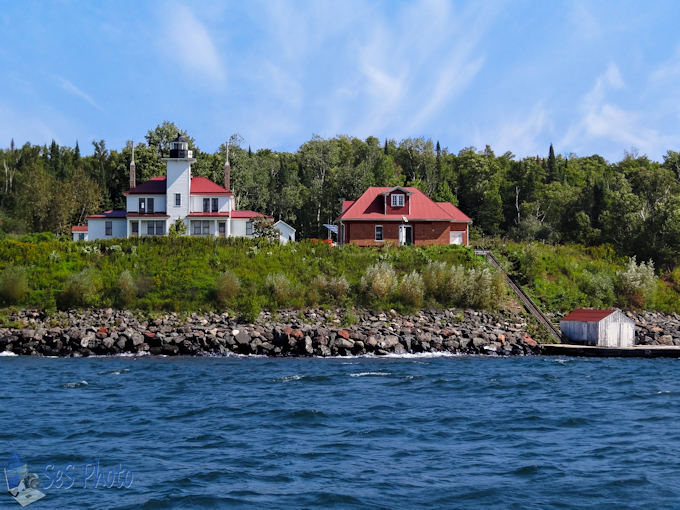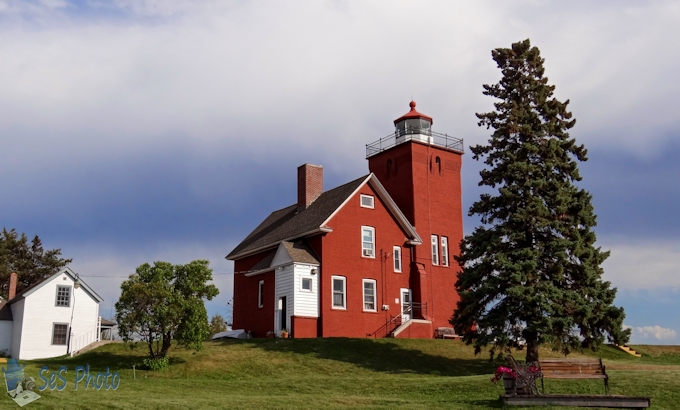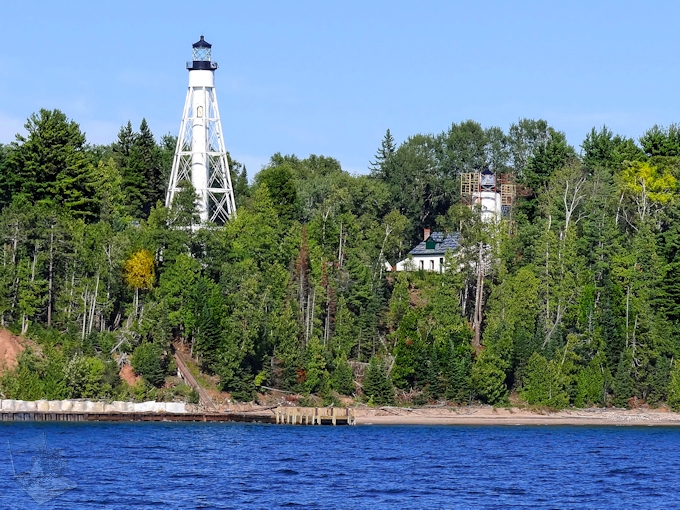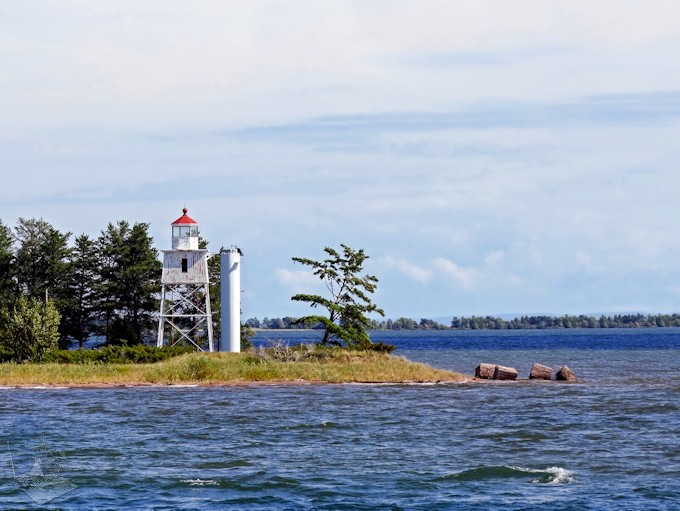The Sand Point Lighthouse (also referred to as the Escanaba/Sand Point, Little Bay de Noc Light or the Escanaba Light as there is another Sand Point Lighthouse in Baraga) is a story-and-a-half rectangular building with an attached brick tower which faces land instead of the water and it is unknown if it was intentional or a blunder. The tower is topped with a cast iron lantern room which houses a fourth order Fresnel lens, emitting a fixed red light with a radiating power of 11.5 miles.
The light was lit for the first time on May 13, 1868, but not by John Terry, the appointed first keeper, but by Mary, his wife as John died a month before the lighthouse was ready. Mary Terry, who was one of the first women lighthouse keepers on the Great Lakes, continued to be the keeper for 18 years until March, 1886 when a suspicious fire severely damaged the building and killed the keeper Mary Terry. There is a certain amount of mystery about this fire as there were several unusual circumstances surrounding it. Many people thought that Mary Terry had been murdered, robbed, and the lighthouse set on fire. The south lighthouse door was open and the lock was found with the bolt shot forward as if the door had been forced open, not unlocked, and the fact that Mary was found in the oil room and not in her bedroom, led people to believe there was foul play although Mary’s gold coins were still in the building. A coroner’s jury ruling “that Mrs. Terry came to her death from causes and by means unknown, was the only one that could be rendered”.
But the death of Mary wasn’t the only incident at the Sand Point Lighthouse. On July 6, 1906, eighteen-year-old Edith Rose was up in the lantern room polishing the lens when a lightning bolt hit the tower. The strike reportedly blew out all the windows in the lighthouse, demolished an organ, turned all the silverware in the lighthouse a deep brown, and ejected nails from the walls that burned holes in the carpets. Surprisingly, none of the three occupants of the lighthouse at the time were injured.
When Keeper Lewis Rose retired in 1913, Peter J. Peterson took charge at Escanaba, but just two months later he collapsed at the kitchen table and died while his wife was lighting the lamp. Mrs. Peterson was appointed temporary keeper, but not following Mary’s footsteps, Mrs. Peterson resigned shortly thereafter.
The lighthouse ceased operation in 1939 when the Coast Guard constructed an automated crib light several hundred feet offshore, which replaced the function and duties of the Sand Point Lighthouse and the building was used as housing for Coast Guard seaman who were assigned to duty in Escanaba, Michigan. In 1986, the Delta County Historical Society obtained a lease and went about the task re-furnished all the rooms in the lighthouse to appear as they would have at the turn of the twentieth century, including replacing part of the tower and lantern room which had been removed when the lighthouse was remodeled for living quarters, and opened the lighthouse to the public in July of 1990.
Sand Point Lighthouse


